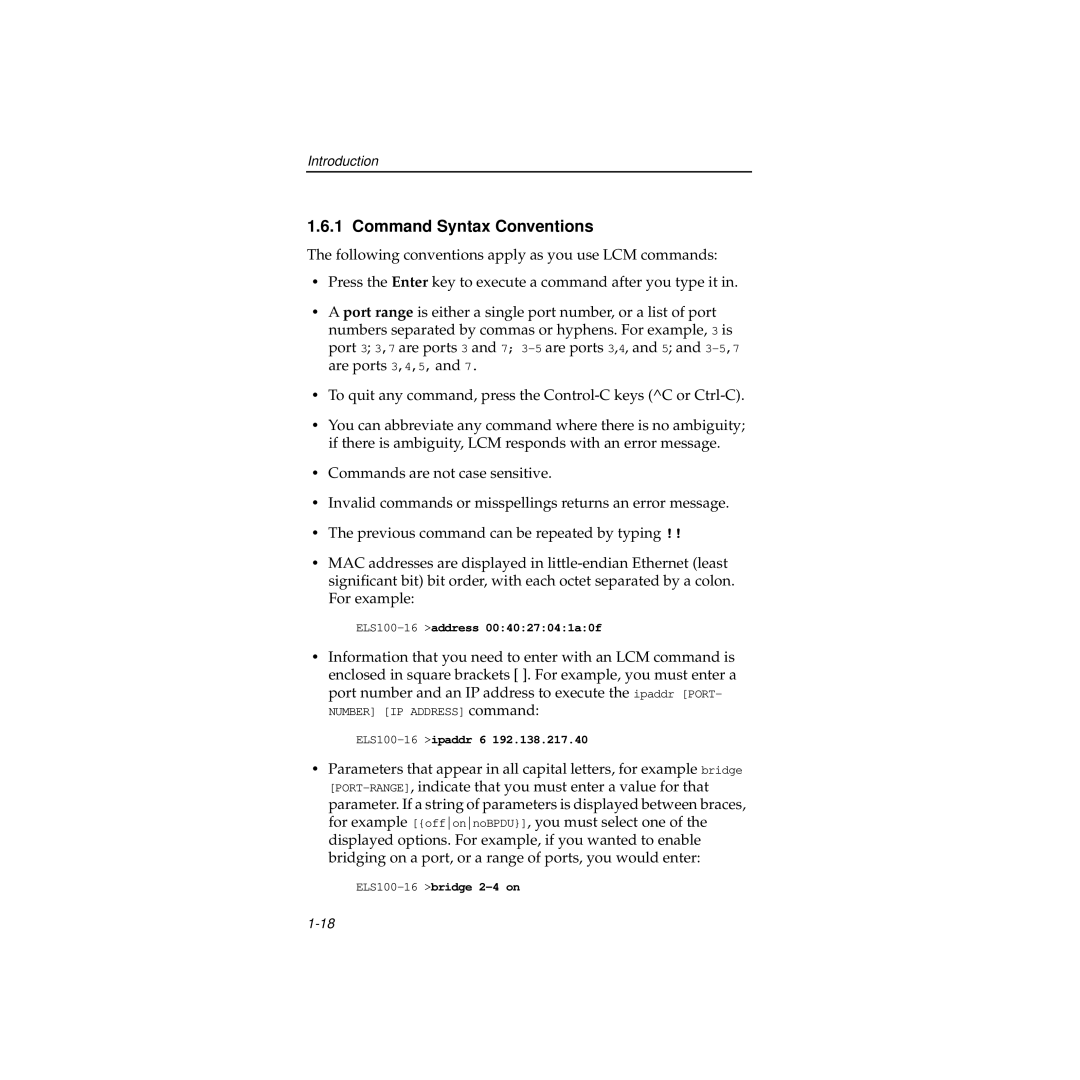Introduction
1.6.1 Command Syntax Conventions
The following conventions apply as you use LCM commands:
•Press the Enter key to execute a command after you type it in.
•A port range is either a single port number, or a list of port numbers separated by commas or hyphens. For example, 3 is port 3; 3,7 are ports 3 and 7;
•To quit any command, press the
•You can abbreviate any command where there is no ambiguity; if there is ambiguity, LCM responds with an error message.
•Commands are not case sensitive.
•Invalid commands or misspellings returns an error message.
•The previous command can be repeated by typing !!
•MAC addresses are displayed in
•Information that you need to enter with an LCM command is enclosed in square brackets [ ]. For example, you must enter a
port number and an IP address to execute the ipaddr [PORT- NUMBER] [IP ADDRESS] command:
•Parameters that appear in all capital letters, for example bridge
